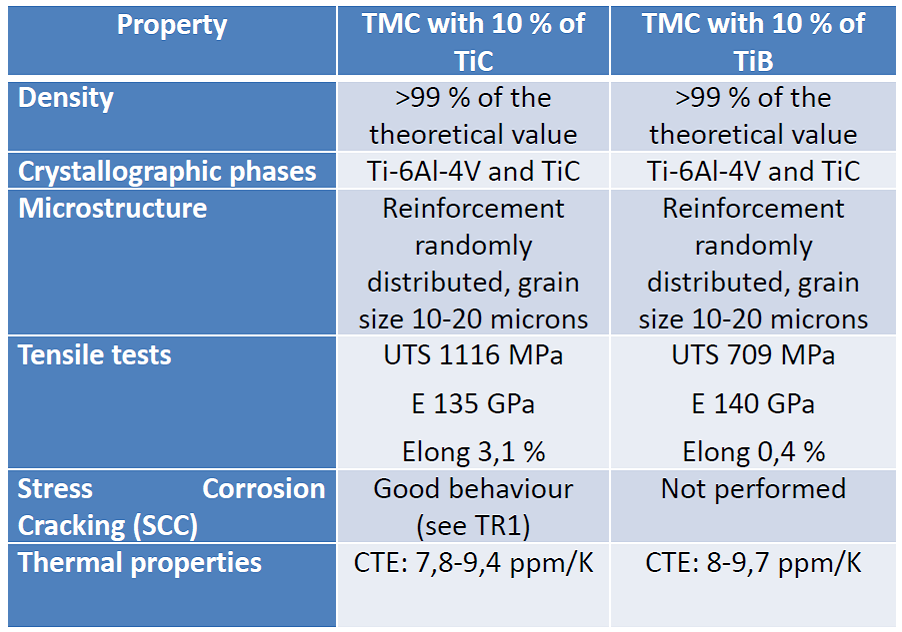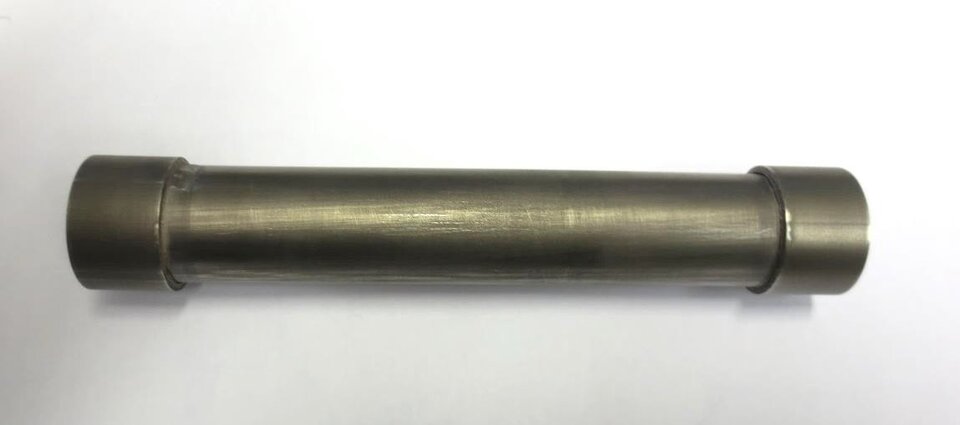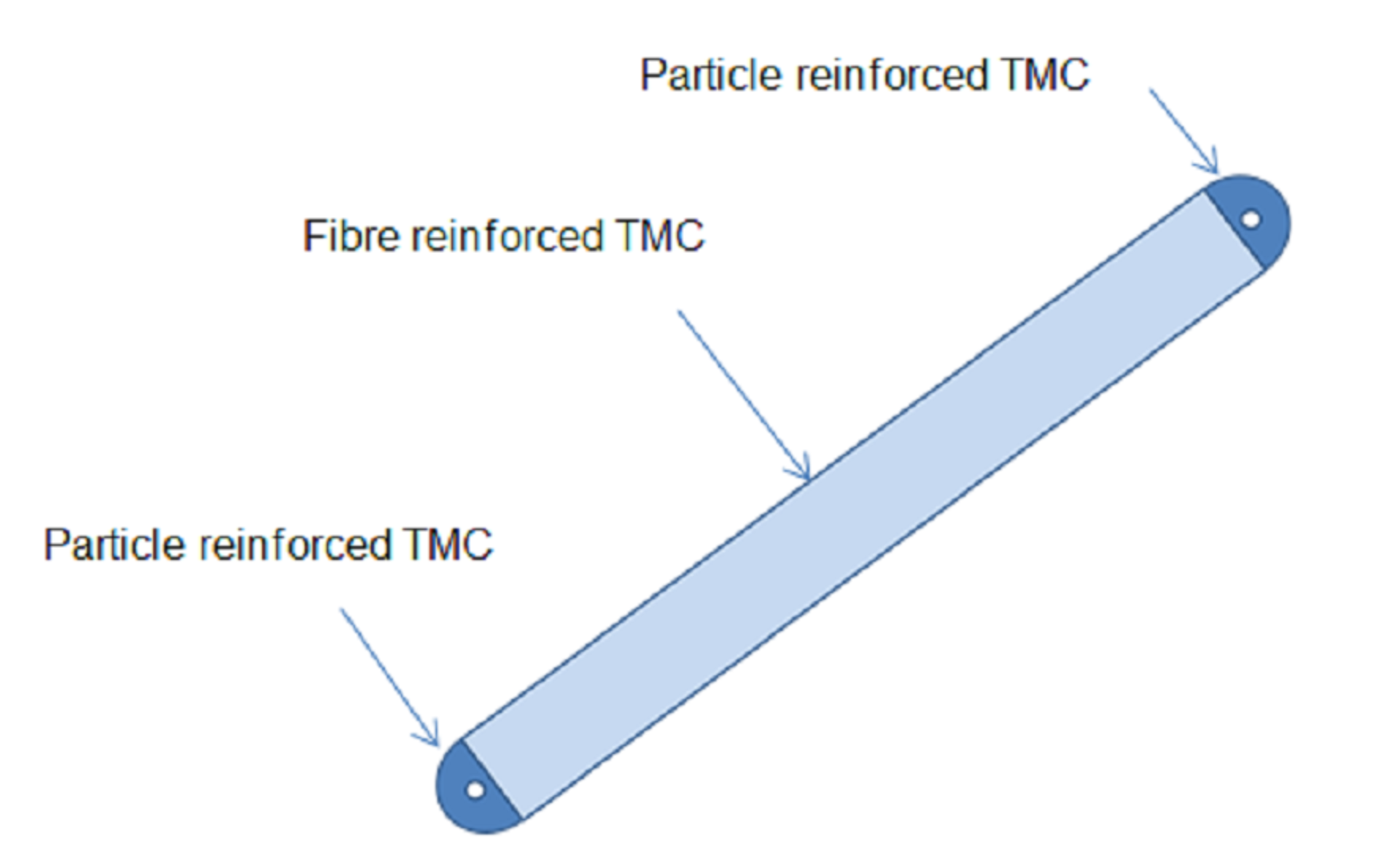Development and characterisation of advanced metal matrix composites
| Programme: | GSTP | Achieved TRL: | 4 |
| Reference: | G517—030QM | Closure: | 2016 |
| Contractor(s): | Tecnalia (ES) | ||
Metal matrix composites (MMCs) are hybrid materials composed of a metal matrix and a reinforcing element. The main advantages of MMCs are the increased mechanical and physical properties, i.e. strength, stiffness, hardness etc. with respect to the base material. Titanium and titanium alloys are very attractive materials for advanced applications due to their intrinsic properties (low density, corrosion resistance). However, further improvements are needed to make them competitive with high strength steels or Ni-based alloys in specialized applications that demand properties beyond the levels provided by the conventional titanium alloys. This demand for increased performances continues to drive material development efforts to explore new concepts like titanium matrix composites (TMCs).
The benefits of TMCs is that their properties can be tailored with respect to strength stiffness, CTE, etc. with a low density. However, a very short interaction time at high temperature between the reinforcement (e.g. SiC, TiC, TiB) and titanium is required during processing due to the intrinsic reactivity of titanium. Compared with reinforcement based on monofilament, the particulates reinforcement allows obtaining quasi-isotropic properties and increases the range of potential applications.

Objective(s)
The objective of this work is to develop, and characterise advanced particulate titanium matrix composites (MMC-s, specifically Hybrid TMC). This is achieved by combining the advantages of fiber reinforced TMCs and particle reinforced TMCs. In addition, particle reinforced TMCs are developed within the project. The development is validated by manufacturing and testing a demonstrator.
Achievements and status
A Breadboard based on a real aluminium housing was designed and manufactured by liquid moulding techniques using CFRP laminates with through thickness thermally enhanced properties. The conducted validation activities demonstrated that the selected material and manufacturing technology are suitable for the manufacturing of housings for highly dissipative electronic components.
The CFRP housing was tested under loading conditions typical of the spacecraft environment and the results were successful. The obtained through thickness thermal conductivity of CFRP material was 3,45 W/mK. These values are lower than the potential expected values (10 W/mK). Considering that in lightweight space applications, composite materials are usually produced as thin laminates (t <3 mm), the achieved through thickness thermal conductivity (3,5W/mK) should be suitable for most housing applications. Design concept for highly dissipative electronic housing. The adoption of a design concept based on using carbon fibres of different nature has been proven as suitable for the manufacturing of housing for electronic components with thermal dissipation needs. The breadboard passed the required mechanical testing and the thermal results were similar to the aluminium reference housing.

Benefits
Application of this technology is for VEGA Avionics, A6 Avionics. For the hybrid TMC concept, a DEMO project has been submitted to transfer this knowledge to a non-space application: aeronautic application: part of the landing gear structure that requires high stiffness. This development is being carried out together with TISICS, Ltd. Company. For the particle, reinforced TMC the possibility to use this materials a pin consumable in FSW (Friction Stir Welding) process is being studied. The idea behind is to use the TMC as welding material in FSW.
Next steps
The development of particle reinforced TMC and the hybrid TMC (particle reinforced and fibre reinforced) have shown promising properties that deserved further development. A broad GSTP proposal (New Inserts) is under preparation to cover the development of new generation inserts and fixation systems developed by AM and TMC processing.















 Germany
Germany
 Austria
Austria
 Belgium
Belgium
 Denmark
Denmark
 Spain
Spain
 Estonia
Estonia
 Finland
Finland
 France
France
 Greece
Greece
 Hungary
Hungary
 Ireland
Ireland
 Italy
Italy
 Luxembourg
Luxembourg
 Norway
Norway
 The Netherlands
The Netherlands
 Poland
Poland
 Portugal
Portugal
 Czechia
Czechia
 Romania
Romania
 United Kingdom
United Kingdom
 Slovenia
Slovenia
 Sweden
Sweden
 Switzerland
Switzerland


























